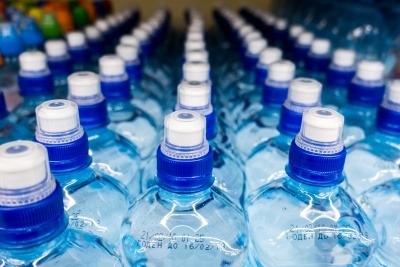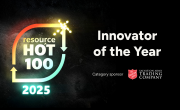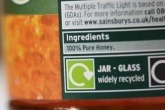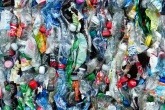Maximising recyclability: New guidance from UK Plastics Pact
The UK Plastics Pact has published guidance to recommend the best polymer, colour and labelling choices for rigid plastic packaging, in an aim to increase recyclability and recycling rates.

The guidance, published today (16 July) classifies which plastics are currently recyclable, before addressing its ‘best in class’ suggestions for packaging design.
Takeaway trays, plastic bottles and other forms of rigid plastic packaging are notoriously difficult to recycle, often because they are made from polymers that are not widely collected, or because they are produced in colours that can’t be detected by near-infrared sensors in Materials Recovery Facilities (MRFs).
The guidance therefore recommends clear PET as the optimum packaging for recyclability, as this has the greatest opportunity to be recycled into packaging and other products.
It also advises that labelling covers less than 40 per cent of the packaging, as labels do not commonly get recycled.
The UK Plastics Pact, which is managed by the Waste and Resources Action Programme (WRAP), intends that this guidance will be a crucial step in achieving its targets: all plastic packaging to be reusable, recyclable or compostable by 2025, with an average of 30 per cent recycled content across all packaging formats.
‘A significant milestone’
Peter Maddox, Director of WRAP UK, launched the guidance at today’s Packaging News Environmental Packaging Summit, and said: “If plastic is recyclable, and clearly labelled as such, we stand a far greater chance of keeping that plastic in the economy and out of the natural environment.
“We also know from recent research that citizens want to see packaging that is 100 per cent recyclable, which they can recycle at home. By rationalising the number of polymers used in packaging, we can develop a more efficient recycling system, and reduce confusion for citizens.
“Through the UK Plastics Pact we are working at pace with our members to respond to this and ensure that all plastic packaging is reusable, recyclable or compostable by 2025. This new guidance is a significant milestone in our journey towards reaching that target.”
He added: “Businesses that specify, design and produce plastic packaging will be able to draw on this resource for best practice guidance in selecting plastic polymers which are recyclable, while retaining the important protective properties that packaging has. While some plastics are classed as recyclable, there is a need to move beyond this, ideally selecting polymers which have a greater recyclability potential than others.”
Guidance welcomed by OPRL
The On-Pack Recycling Label (OPRL) scheme has commended the Plastic Pact’s guidance as a vital step forward in the push for sustainable packaging and increased recycling rates.
Earlier this month, OPRL announced its latest review of its labelling rules, aiming to finalise its revised labelling standards by the end of the year. The company will use the Pact’s guidance as a key evidence base to inform the reviewed labelling rules.
Commenting on the release of the Pact’s guidance, Jane Bevis, Chair of OPRL, said: “The public find plastics confusing and, with widespread concerns over irresponsible disposal and environmental pollution by plastic packaging, are increasingly condemning all plastic packaging as intolerable.
“But plastic packaging has a key role in protecting our environment too – well-chosen polymers used in well-designed packaging are vital to reducing food waste and the resulting methane and other greenhouse gas emissions. So this hugely welcome guidance from the Plastics Pact is crucial in promoting a paradigm shift in packaging design, both food and non-food.
Bevis explained how, as well as adopting the Pact’s guidance as evidence for OPRL’s labelling revisions, the company will also use its findings to inform the update of its recyclability assessment tool, PREP (Packaging Recyclability Evaluation Portal). This tool allows manufacturers to ensure that packaging is compliant with the ISO 14021 standard, an international standard for environmental labelling.
“By shifting design choices into a narrower range of recyclable polymers we not only reduce confusion for consumers, but ease sortation at MRFs and reprocessors, and create the markets for recyclate once consumers have done their bit within the circular economy. That’s a win, win, win!”
You can read the new plastic packaging guidance on the WRAP website.








